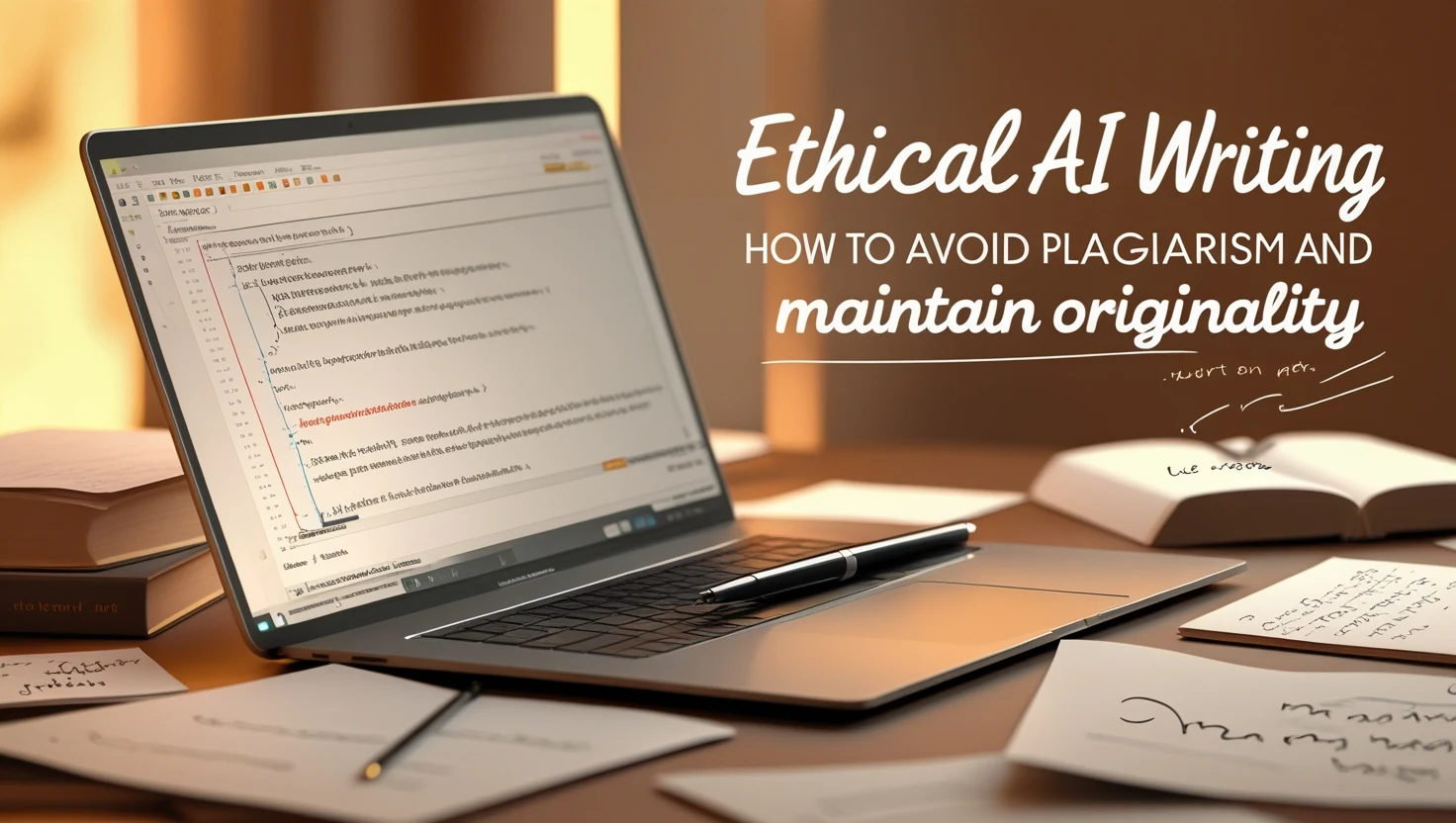Introduction: The Intersection of AI and Plagiarism
In the age of digital content creation, Artificial Intelligence (AI) has revolutionized the way we write and generate ideas. However, as AI becomes a more prevalent tool for writers, marketers, and content creators, concerns around AI and plagiarism have emerged. Does AI count as plagiarism? And more importantly, how can one use AI without plagiarizing? In this blog, we’ll explore the ethical aspects of AI-assisted writing and share practical tips to avoid plagiarism while maintaining originality.
What is Plagiarism and How Can You Avoid It?
Plagiarism refers to the act of using someone else’s work, ideas, or expressions without giving proper credit. Whether intentional or accidental, plagiarism is considered unethical and can damage your reputation or even result in legal consequences. Understanding what plagiarism is and how to avoid it is critical in any writing process, especially in the digital age where information is abundant and easily accessible.
Key Types of Plagiarism to Watch Out For:
- Direct Plagiarism: Copy-pasting someone else’s content without quotation marks or citation.
- Paraphrasing Plagiarism: Rewording another person’s ideas without proper attribution.
- Self-Plagiarism: Using your previously published content without citing it.
- AI-Generated Plagiarism: Using AI tools to create content that mirrors someone else’s work without proper reference.
Can AI Tools Lead to Plagiarism?
A common question is “Is it plagiarism to use AI?” The short answer is no—AI tools themselves do not plagiarize. However, the way they are used can lead to plagiarism if the content generated closely mirrors other sources or lacks proper attribution. AI systems work by analyzing vast datasets and generating content based on patterns, but they cannot differentiate between original content and pre-existing works unless the user ensures that they provide proper context and citation.
How to Use AI Without Plagiarizing: Best Practices
Here are some key practices for using AI ethically and avoiding plagiarism:
- Thorough Research and Fact-Checking: Even though AI tools like Gracker.ai can generate high-quality content, it’s important to cross-check facts, data, and claims. AI may generate similar content to existing sources, so always validate the information and rephrase it to ensure it reflects your unique voice.
- Use AI as a Supplement, Not a Replacement: AI should assist your writing, not replace the creative process. Use AI for idea generation, drafting, or overcoming writer’s block, but always ensure you add your own insights and perspectives to maintain originality.
- Paraphrasing and Proper Citation: If AI generates content based on existing ideas, ensure you paraphrase effectively. Paraphrasing means putting concepts into your own words while preserving the original meaning. You can use a reliable paraphrasing tool to support this process. Always remember to cite the original sources properly to avoid accidental plagiarism.
- Leverage Plagiarism Checkers: AI tools can sometimes unintentionally generate content that’s too similar to pre-existing works. To avoid this, always run your content through reliable plagiarism checkers such as Grammarly, Copyleaks, or iThenticate to ensure its uniqueness before publishing.
- Use Quotation Marks for Direct Quotes: If your AI tool generates a sentence or phrase that is directly from another source, always use quotation marks and cite the original author. This is key to ensuring your writing adheres to ethical standards and avoids plagiarism.
- Acknowledge Your AI Assistant: If AI contributes to significant portions of your work, consider acknowledging its role. This can be done by adding a note in your methodology or acknowledgments section, making it clear that AI was part of the process.
Tips to Avoid Plagiarism in AI Writing
- Reword and Restate Ideas: Don’t just rely on rewording; understand the source material and present it in a fresh, original context.
- Proper Attribution: Always provide citations for any content that isn’t your own, including ideas and insights generated by AI.
- Create Unique Content: Use AI as a brainstorming tool, but craft your own narrative. Ensure that the final product represents your personal writing style and insights.
Citing Your Sources Properly
Even when you paraphrase or summarize someone else’s ideas, proper citation is essential to avoid plagiarism. Understanding the required citation style—whether it’s APA, MLA, or Chicago—is key, especially in academic or professional writing.
If writing citations manually feels overwhelming, generators like EasyBib or ZoteroBib can help streamline the process while ensuring accuracy.
Does AI Count as Plagiarism?
Using AI in writing does not automatically mean plagiarism occurs. However, if the AI generates content that is too similar to existing works, it may result in accidental plagiarism. AI and plagiarism issues often arise when the generated text lacks proper citation or when it closely mimics the structure or ideas of others without transformation or attribution.
Final Thoughts: Maintaining Ethical Integrity with AI
The rise of AI in writing brings both opportunities and challenges. While AI writing tools can significantly improve productivity, AI-generated plagiarism is a risk that cannot be ignored. Writers must remain vigilant, ensuring that they avoid plagiarism by paraphrasing effectively, citing sources, and using AI as a supportive tool rather than a crutch. By following these best practices, you can create original content that maintains ethical integrity while harnessing the power of AI.
